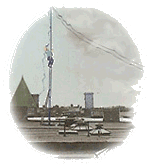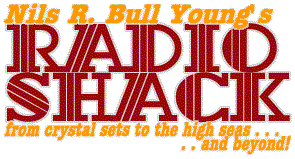In the middle of changes with my job at the university and a bunch of other stuff, but after Cindy had rejoined the workforce and thus made more money than I did, the entire technology of QRP changed.
First of all, things got suddenly smaller. Surface-mount-technology and surface-mount-devices (SMT & SMD, as they came to be known in technospeak) made radios a lot smaller, less energy hungry and deviously mean to fix. Some QRP loonies were not disuaded by this and plunged on ahead into designing and building smaller boxes of interesting stuff for people like me to play with.
Enter Wayne Burdick (N6KR) and Eric Swartz (WA6HHQ) with the audacity to think of forming a company,
Elecraft.com, to sell sweetly designed radios to kit builders and their kin. The first radio they put up for sale was the
K2, 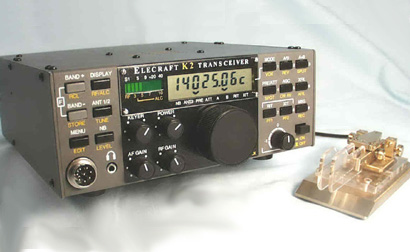
a CW rig that covered 80 through 10m and ran about 10W out if you built it right. For a pile of extra change, builders could add SSB, a noise-blanker, 160m & an internal battery. That came to about $700, which was about as good as you could pay for a built radio from Japan.
Well, a low-end built radio from Japan.
Of course, I bought one. I had the money sent to Wayne & Eric before the first prototype had gone off to the beta-testing/building volunteers. Then, about six or eight months later, my K2 showed up between the front door & the screen door on the front porch.
Now you have to understand that I had just gotten back to walking erect. See, I'd had hernia surgery a couple weeks before the kit arrived. So medicated and more or less hobble-bound, I put the radio together bit by bit over the next three weeks. I broke a
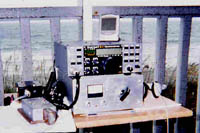
couple parts getting it together & found that I'd broken the parts trying to get it running.
Then it was vacation time.
Cindy & I and Andy drove off to spend a week at Myrtle Beach. Beach-side, with my battery & home made antenna tuner, I ran that little radio through its paces left and right, up and down. It worked great! I talked to people all over the place, including a guy in Australia.
Not bad for 5w output. (That's what I'd set my limit at during the first months of testing &c.
Then I got home from vacation & started getting power hungry.
It wasn't long before I'd saved up enough extra overtime money to buy the next little QRP rig that was on the market. The SG2020 was built like a brick of aluminum. In fact, that's about all it was: a chunk of machined aluminum with a chunk of aluminum inside it. One of the chunks of aluminum held two circuit boards, plus the front panel board & control board. It was tight.
And it was full of SMD.
I waffled back and forth between the K2 and the SG2020 for a while. Then I bought a "kit" of 100W amplifier parts & the circuit board from a local electronics project house. I put the amp together, cobbled up a LPF for it and tried using it on the K2. It worked really nice. I could talk to people just as easily with this set up as I could with the old TR7.
The problem with all this was simple enough: I'd built the amp from a collection of parts & a board, put it inside a box that I'd had laying around and, plainly put, had a nice project that worked ok. At least it worked ok until I ran 25W from the SG2020 into it. Blew up the transistors (and some other voltage-regulating stuff as well, I figure).
I blew up the output transistors three times. At $50 a whack replacing them, I finally realized
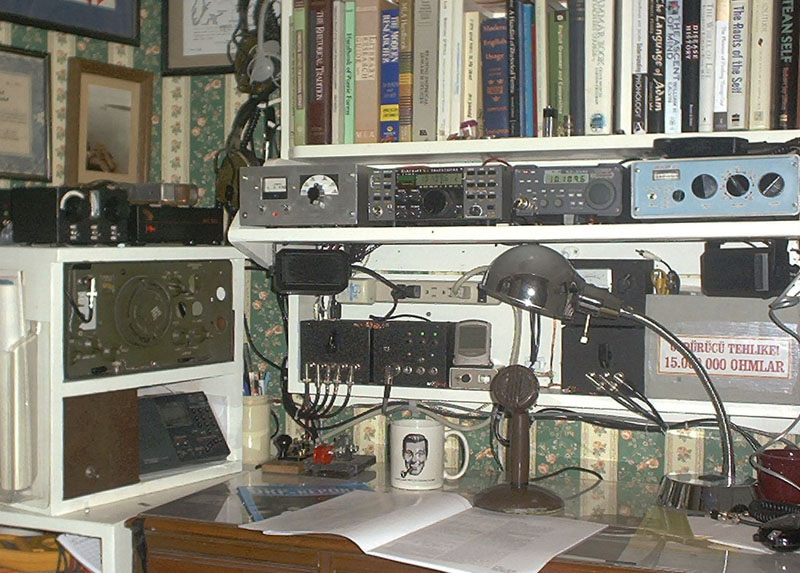
that I had $1200 worth of radios and a home brew money pit. And at that point my rational side kicked in. I began to have long-winded conversations with my rational side.
Eventually the rational side convinced me to sell the K2, the SG2020, a bunch of other stuff, and get a radio out of a box that ran 100W and did all the stuff that the K2 or the SG2020 did. Only bigger. And I didn't have to built it.
With the money I'd collected selling stuff, I bought an Icom IC718. Which, as you can expect me to say often enough by now,
leads to the next page.
